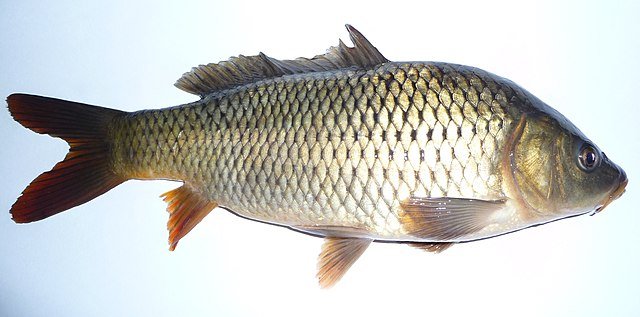
Optimizing Fish Feeding is Crucial for Both Growth and Environmental Impact. Carp, an important aquaculture species, can benefit from optimized feeding strategies.
A study published by researchers from Radboud University (Netherlands) explores how different diets and feeding regimes impact the intestinal microbiome of carp (Cyprinus carpio), potentially influencing growth and waste management.
The Protein Puzzle: Balancing Growth and Waste
Protein is the most expensive and crucial component of fish feed. Efficient use of proteins means that fish can build muscle instead of using it for energy, leading to faster growth and less waste production.
Previous research has shown that variable protein content in carp feed and feeding methods (on-demand feeding vs. batch feeding) affect growth, nitrogen excretion, and how fish break down amino acids.
A promising strategy is on-demand feeding, where fish dictate their own feeding schedule.
On-Demand Feeding: Benefits Beyond Growth
Studies show that on-demand feeding not only improves growth and feed conversion rates in fish but also offers unexpected benefits:
- Reduced Stress: Fish fed on-demand exhibit lower levels of cortisol, a key stress hormone.
- Improved Well-being: On-demand feeding seems to enhance fish well-being, with less fin damage.
- Less Waste: Fish fed on-demand may excrete less ammonia, a toxic waste product.
The Gut Microbiome: A Hidden Player
While the positive effects of on-demand feeding on growth and waste are evident, scientists are now exploring its impact on the gut microbiome, a complex community of microbes living within the fish’s intestines. Previous research suggests that feeding patterns significantly influence the composition of the gut microbiota. These microbes play a vital role in digestion, immunity, and even behavior.
Unraveling the Microbiome Mystery
Scientists are using advanced sequencing techniques to identify the bacterial communities present in fish. While the relationship between gut microbiota, diet, feeding regimes, and fish health is still being explored, recent studies have shown:
- Gut Microbes and Nitrogen Metabolism: The composition of intestinal bacteria can influence how fish utilize dietary nitrogen, a waste product.
- On-Demand Feeding and Microbiome Connections: This study aims to investigate how on-demand feeding affects intestinal microbiota diversity, the abundance of specific microorganisms, and overall microbial networks in carp.
Understanding the Link Between Gut Health and Fish Performance
This study investigates the impact of on-demand feeding on the gut microbiome of carp fed with two different protein levels. The researchers aim to:
- Analyze microbial diversity and specific populations in the gut.
- Map the interaction network within the gut microbiome.
- Correlate gut health with fish growth and nitrogen metabolism.
Lower Protein, Higher Microbial Diversity
The study found that carp fed diets with lower protein content showed a more diverse gut microbiome. Additionally, the combination of on-demand feeding and protein content significantly affected specific microbial composition.
Interestingly, the activity of an enzyme in the liver, glutamate dehydrogenase (GDH), was correlated with gut microbiome composition across all dietary treatments. This suggests a potential link between gut microbes and internal physiological processes of the fish.
Key Microbes and Network Analysis
The research identified specific bacterial families, Beijerinckiaceae and two families of Rhizobiales, which were more abundant in carp fed on-demand with a 39% protein diet. These families also acted as hubs within the microbial association network, suggesting their potential importance in gut function. Interestingly, the microbial association network in on-demand fed carp had fewer connections compared to batch-fed carp.
While the study found a relatively limited overall effect of diet and feeding regime on gut microbiome composition, correlations between gut microbes and liver enzyme activity suggest a deeper connection between gut and fish physiology.
Why This Matters
Understanding how on-demand feeding influences gut health could lead to better feeding strategies for aquaculture. By optimizing gut health, researchers can:
- Improve fish growth and health.
- Reduce waste production for a more sustainable industry.
- Discover new insights into fish biology and gut health interactions.
This study paves the way for further exploration of the gut microbiome and its role in fish performance. By unraveling the intricate relationship between fish, their feed, and their gut microbes, scientists can unlock the full potential of sustainable and efficient aquaculture practices.
Contact
Maartje A. H. J. van Kessel
Department of Microbiology, Radboud Institute for Biological and Environmental Sciences, Radboud University
Nijmegen, The Netherlands.
Email: maartje.vankessel@science.ru.nl
Reference (open access)
Mes, W., Lücker, S., Jetten, M.S.M., Siepel, H., Gorissen, M. & van Kessel, M.A.H.J. (2024) Feeding strategy and feed protein level affect the gut microbiota of common carp (Cyprinus carpio). Environmental Microbiology Reports, 16(3), e13262. Available from: https://doi.org/10.1111/1758-2229.13262

